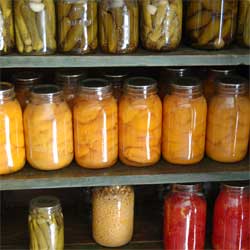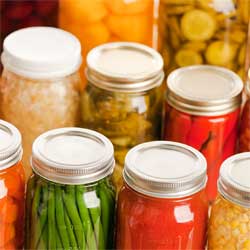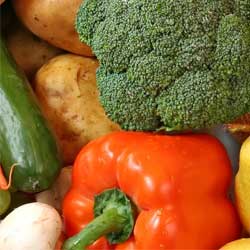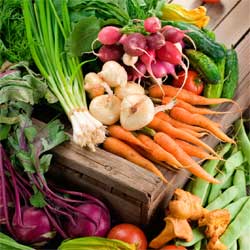Was it a bumper crop this year? Do you have tasty fruits, vegetables and herbs overflowing your storage? Now that the harvest is in, the decision needs to be made as to what to do with the abundance.
Years ago, homes had root cellars to store winter squash and root vegetables such as onions, potatoes and carrots to keep them cool and dry for several weeks. As more homes refinish basements into living spaces and more urban gardeners expand their harvest, however, it may be difficult for gardeners to store their harvest this way. So, what can they do?
Here’s a quick little table to help:
| Vegetable | Store | Freeze/Blanching Time | Can | Dry | Pickle |
| Beets | X | (2 min) | X | X | X |
| Broccoli | (3 min) | X | X | X | |
| Brussels sprouts | (3 min) | X | X | X | |
| Cabbage | (90 sec for wedges) | Pickle first | X | X | |
| Carrots | X | (5 min) | X | X | X |
| Cauliflower | (3 min) | X | X | X | |
| Celery | (3 min) | X | X | ||
| Fennel | (1/2 min) | Pickle first | X | ||
| Horseradish | X | (shred) | Prepare as sauce | X | X |
| Kohlrabi | (3 min) | Pickle first | X | X | |
| Onions | X | (raw) | Pickle first | X | X |
| Parsnips | X | (2 min) | X | X | X |
| Potatoes | X | (cooked) | X | X | X |
| Rutabagas | X | (2 min) | X | X | X |
| Sweet Potatoes/Yams | X | (cooked) | X | X | X |
| Turnip | X | (2 min) | X | X | X |
| Winter Squash | X | (cooked) | X | X | X |
- Storing: Only store mature and perfect vegetables. If there are soft spots or bruises, eat immediately or preserve. Leave several inches of stems on winter squash. It’s important to maintain temperatures between 32-40⁰ Fahrenheit with good air circulation and ventilation. To reduce spoilage, the humidity should be between 85-95 percent.
- Freezing: Freezing maintains nutrients, flavor and texture. Most vegetables require blanching (cutting into pieces, a boiling water bath [see times above], followed by immersion into very cold water) prior to putting into freezer bags or containers in the freezer. Maintain a temperature of 0⁰ Most vegetables will store well in the freezer for up to 12 weeks.
- Canning: Best method for vegetables with high water content such as fruits and tomatoes. Hot water baths or pressure cookers seal the contents in sterilized jars. Most vegetables are low acid foods and require using a pressure cooker. Use cleaned, fresh and tender vegetables. Follow all pressure cooker instructions carefully.
- Drying: No special equipment required. Most people use ovens or dehydrators. It’s important to have good air circulation and all vegetables are cleaned and not bruised. Blanching in a hot water bath increases quality and cleanliness. Adding 1/4 teaspoon of citric acid to each quart of water will reduce darkening and discoloration.
- Pickling: Used around the world to preserve foods, pickling also includes relishes and fermentation. Examples include Kim-chi, pickles, sauerkraut and chutneys. Follow all recipes carefully. Most use vinegar to stabilize acidity and prevent bacteria. Some recipes will suggest canning to preserve the product, others will recommend refrigerator or crock storage.
Have specific questions? The National Center for Home Food Preservation has many online publications to assist you.







